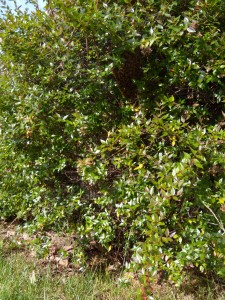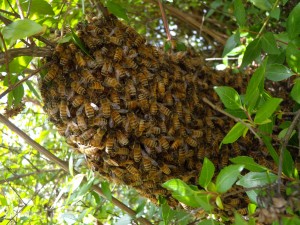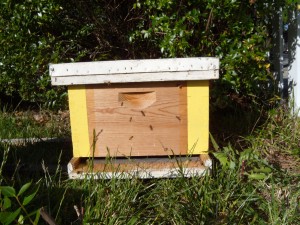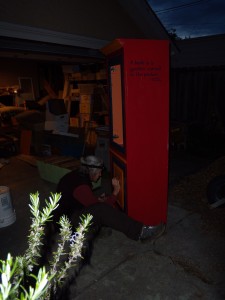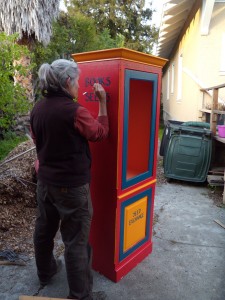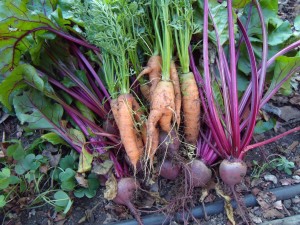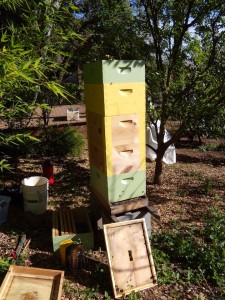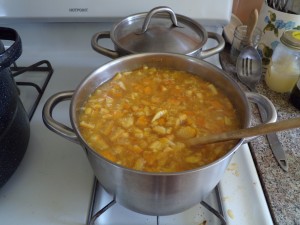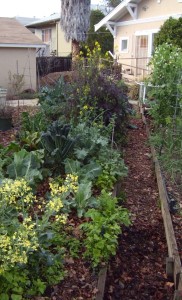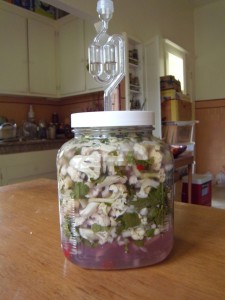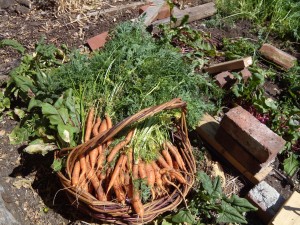 What’s not to love? The feathery leaves and carrot-y green smell make me weak in the knees, but I’ve never actually cooked with carrot greens.
What’s not to love? The feathery leaves and carrot-y green smell make me weak in the knees, but I’ve never actually cooked with carrot greens.
That all changed yesterday, when I harvested 11.75 lbs. of carrots and 5.75 lbs. of accompanying carrot tops. Our chickens disdain carrot greens and I found myself resisting the temptation to chuck the tops in the compost and get on with my day. Surely there must be a way to smuggle them into a recipe fit for human consumption? I poked around on the Internet and discovered that people all over the place love their carrot greens.
Carrot top pesto? Carrot green salads and slaws? Carrot green salsa? I have my work cut out for me in the kitchen.
For starters, I made a batch of carrot soup. No recipe to go by, just a whole lot of carrots and other goodies from the garden. The soup has received rave reviews, so I’ll share the recipe I jotted down.
It has a rich flavor and a stick-to-your-bones feeling. Someone blind tasting it guessed that it had lentils in it—and it was hard to convince her that this soup is carrot through and through. I’m not sure how to say this, but it also tastes kind of fancy. As in, not something I threw together in my kitchen without a recipe. I take no credit; blame it all on the awesomeness that is carrot greens (and maybe also on the butter?!). Whatever it is, I’m sold on this soup.
Before we get to the recipe, a quick note on carrot greens. This is a widely misunderstood garden food, and people sometimes claim it is poisonous. Not true! I won’t go into the details here, but there is plenty of information out there debunking the poisonous carrot greens myths.
On the contrary, carrot greens are edible and also really good for you. They are high in many nutrients, including potassium, vitamin K, and magnesium.
Carrot Green Soup recipe
A caveat: I don’t believe in hard and fast recipes. I used what we had in the garden and kitchen and what seemed right. I hope you will too. And I hope you’ll leave a comment if you make an improvement on the recipe.
Ingredients
- 3 tbsp. olive oil
- 3.5 tbsp. unsalted butter
- 3 small onions
- 7 small garlic cloves, chopped small, or pressed
- 1-2 cubes of bouillon (I used 2, but 1 probably would have been sufficient)
- .25-.5 tsp. green coriander, chopped
- 2 mint leaves, finely chopped (more mint might be even better)
- 1.5 lbs. carrots, chopped small
- 4 cups carrot tops, cut small
- 1 cup beet greens, chopped
- Juice from one Meyer lemon (big and juicy!)
- 4 cups chicken stock
- 2 tbsp. chives, finely chopped
Directions
- Heat olive oil and butter in a large pot
- Add onions and garlic, and cook over medium heat, stirring often
- Add bouillon, green coriander, and mint to pot and stir until bouillon is broken down
- When onions and garlic are cooked, add chopped carrots, and carrot and beet greens, stirring frequently
- Add chicken stock and lemon juice
- Simmer until carrots are well cooked
- Let cool, then blend batches in the blender
- Garnish with chopped chives and mint leaves
- Enjoy!

